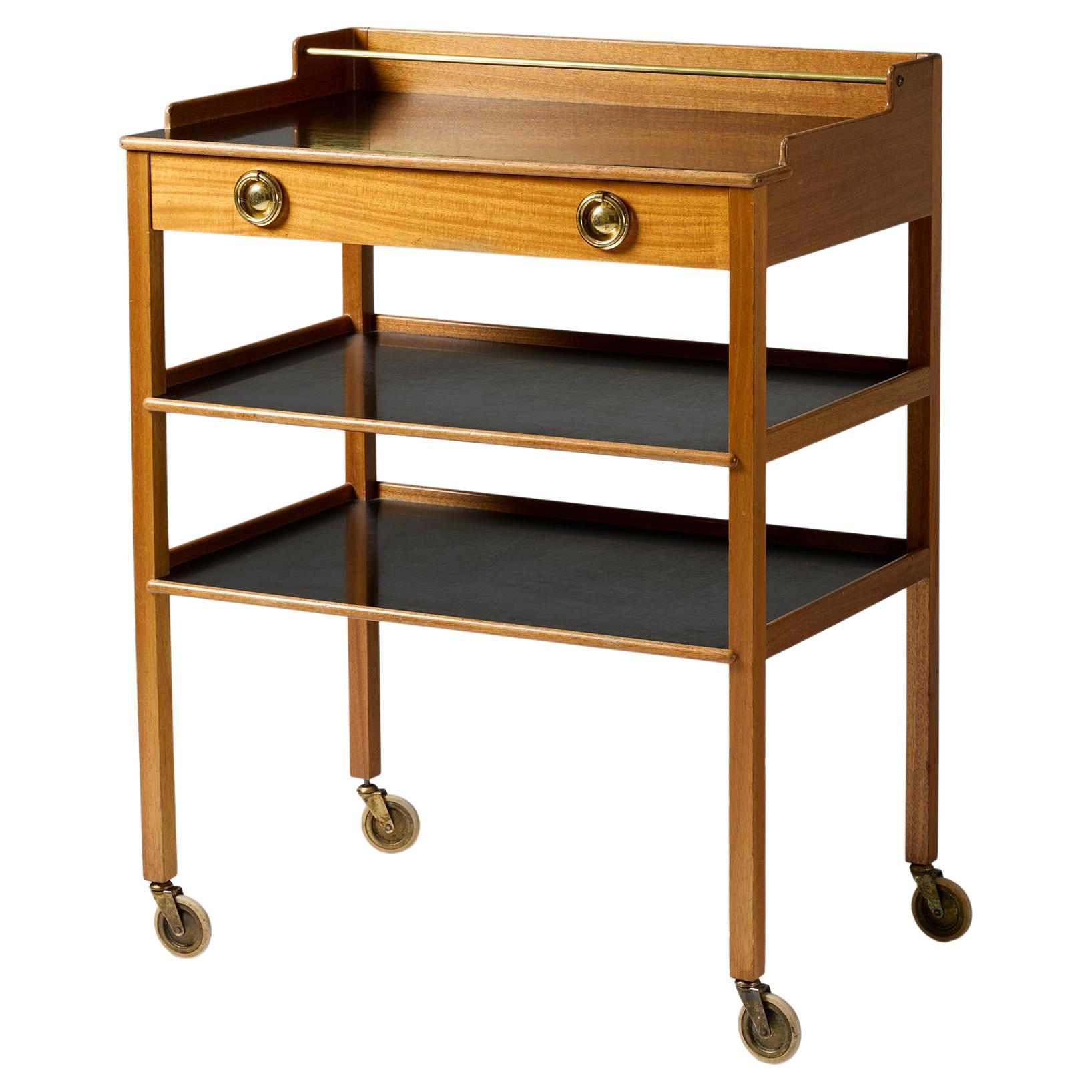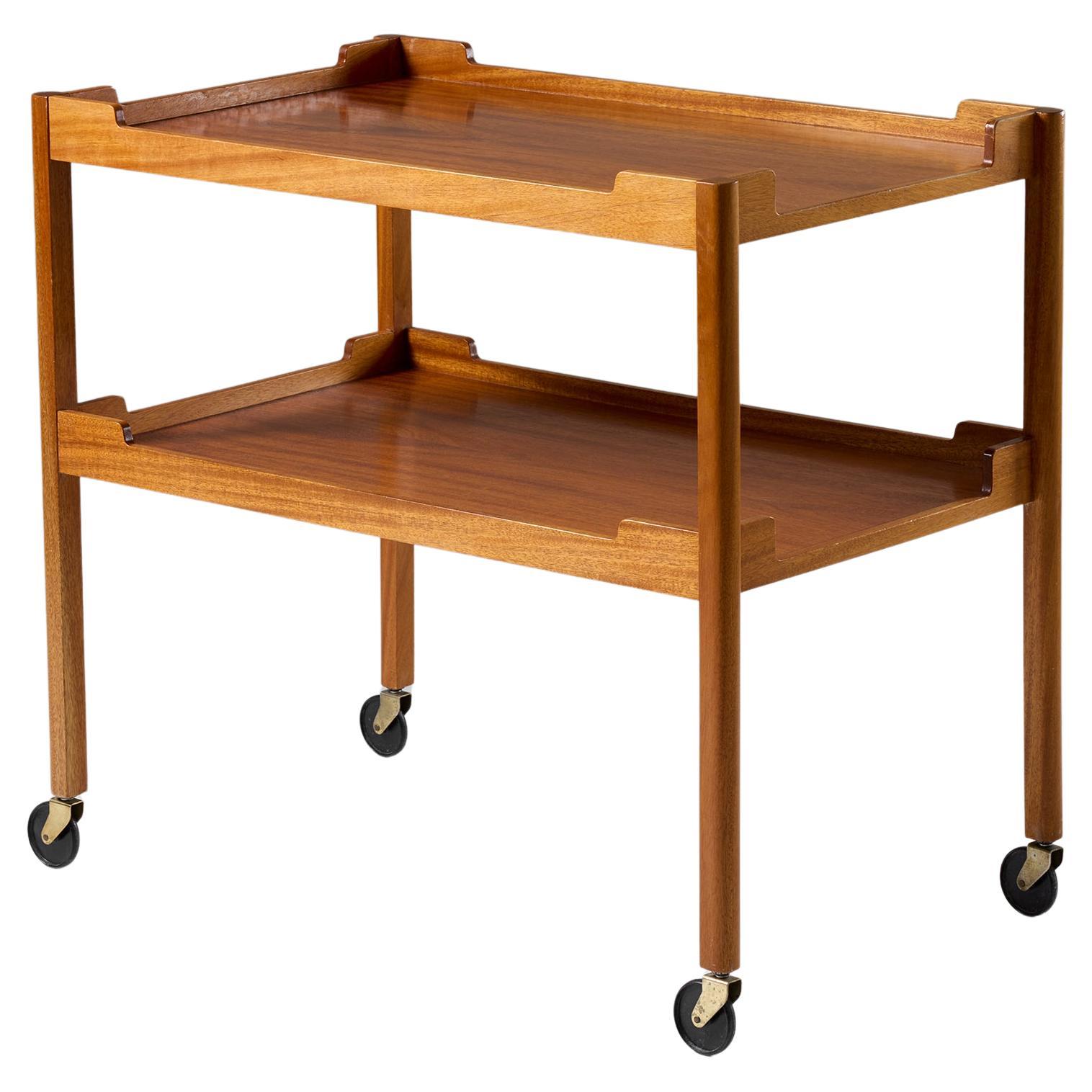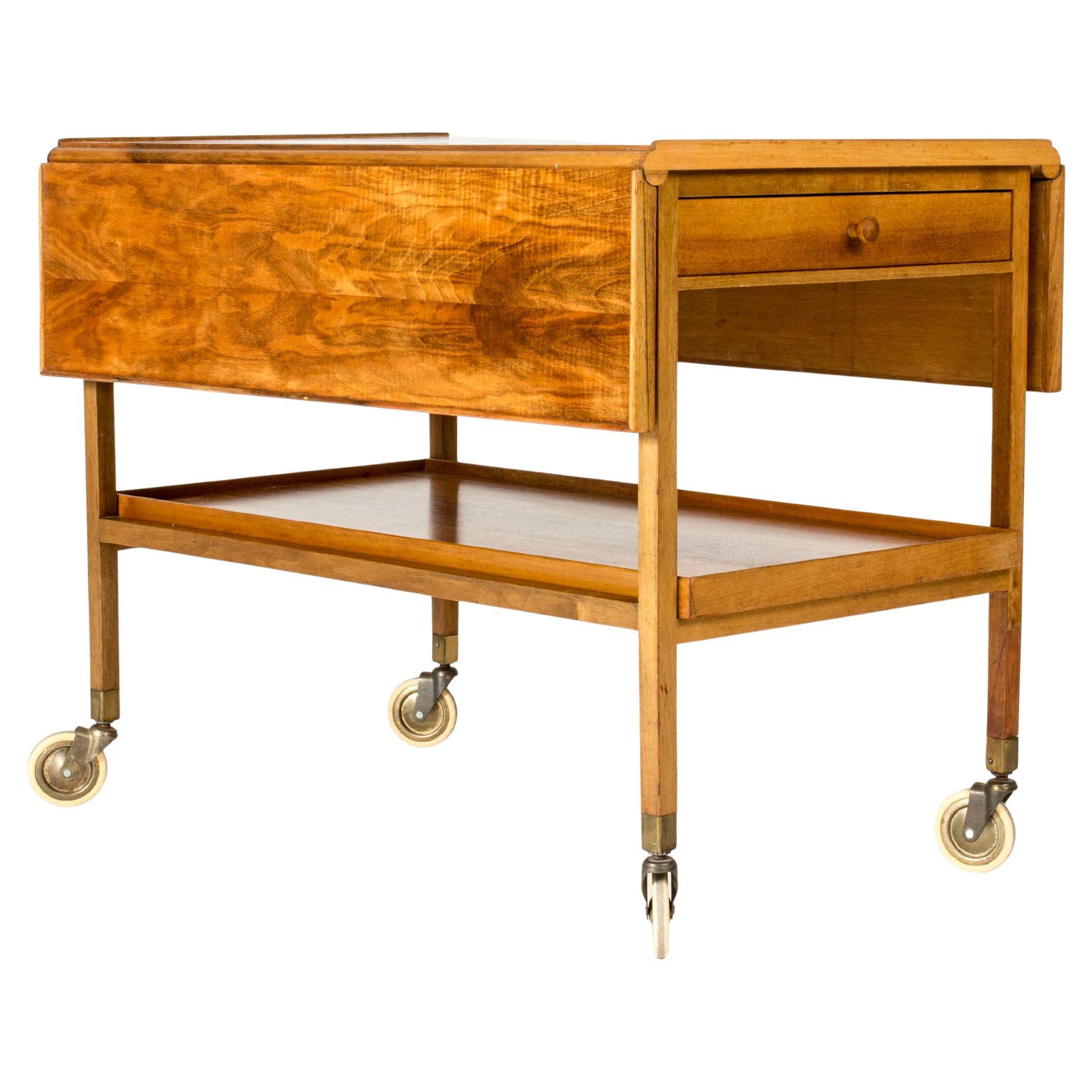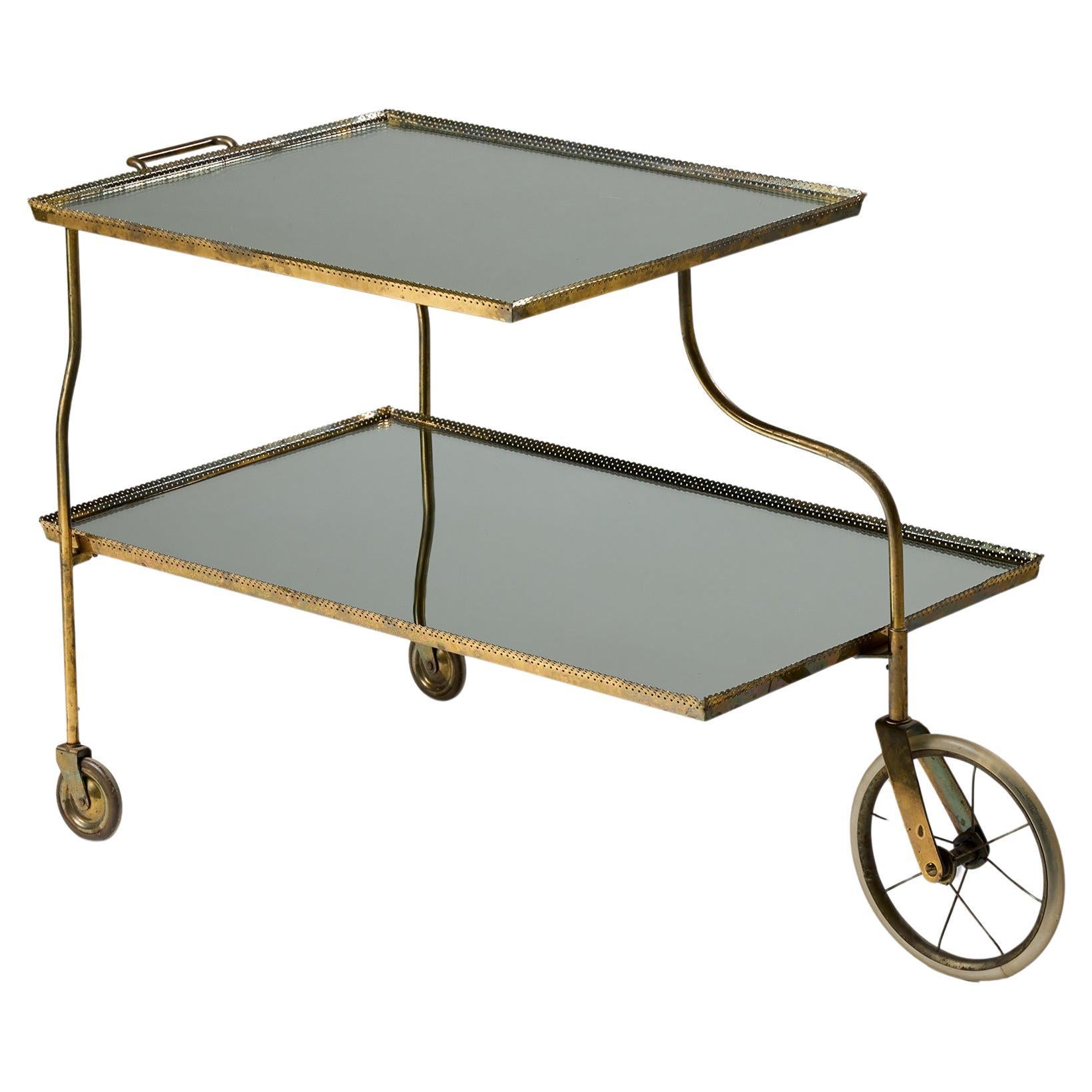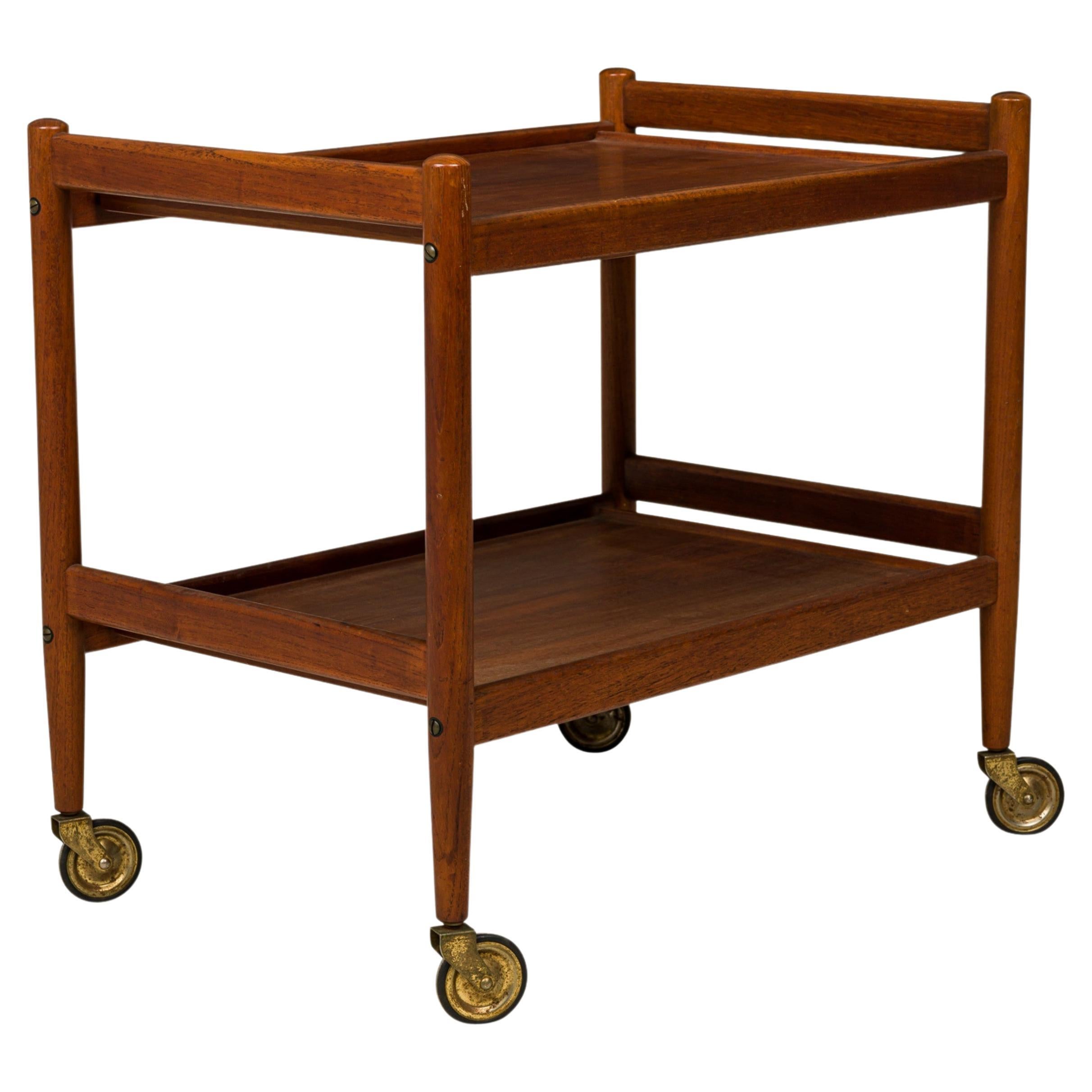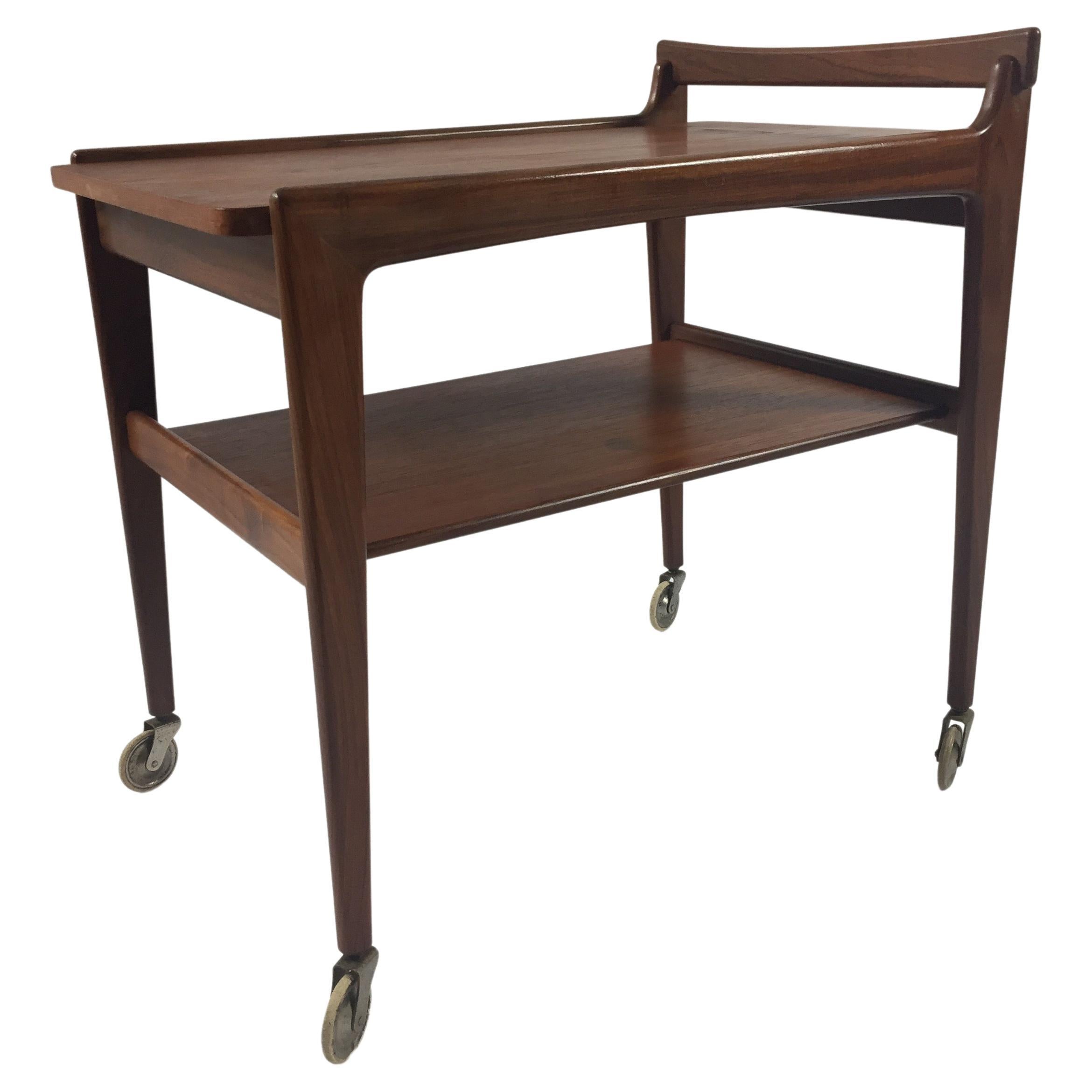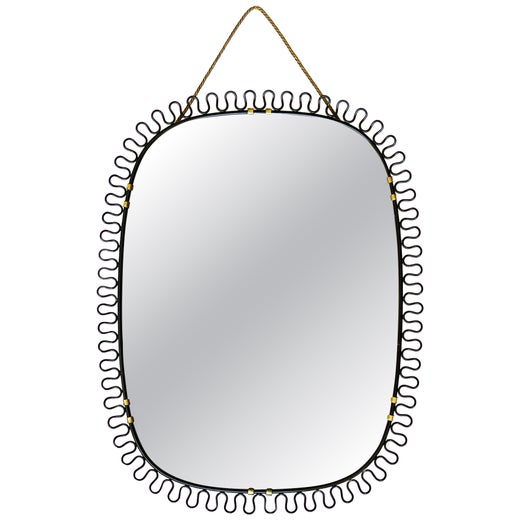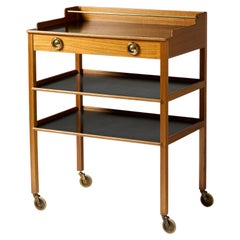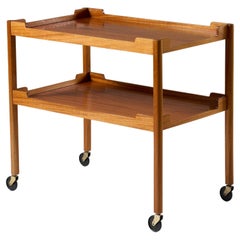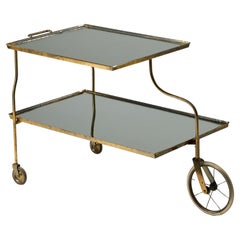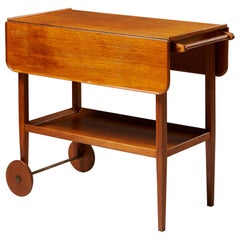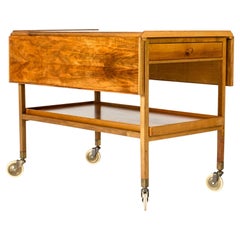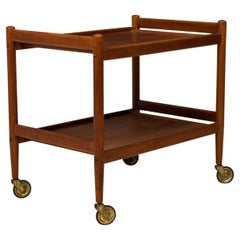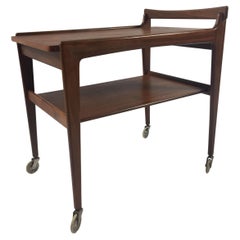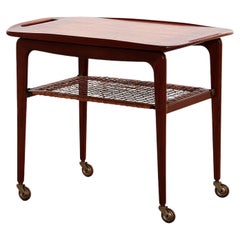Servierwagen aus Nussbaum und Messing Modell 756 von Josef Frank für Svenskt Tenn 1940er Jahre
Angaben zum Objekt
- Schöpfer*in:Josef Frank (Designer*in)
- Maße:Höhe: 65 cm (25,6 in)Breite: 89 cm (35,04 in)Tiefe: 80 cm (31,5 in)
- Stil:Moderne der Mitte des Jahrhunderts (Aus dem Zeitalter)
- Materialien und Methoden:
- Herkunftsort:
- Zeitalter:
- Herstellungsjahr:1940s
- Zustand:
- Anbieterstandort:Stockholm, SE
- Referenznummer:1stDibs: LU1006631541282
Josef Frank
Der österreichische Architekt, Möbel- und Stoffdesigner Josef Frank war eine führende Stimme für einen sanften, humanen Modernismus. Sein Eintreten für warme, gemütliche, eklektisch gestaltete Umgebungen war in seiner Wahlheimat Schweden sehr einflussreich und wird heute weithin als Vorbote der Abkehr vom doktrinären Modernismus und der Hinwendung zum Heimeligen in den späten 1960er Jahren angesehen.
Der Sohn eines erfolgreichen Wiener Textilfabrikanten studierte Architektur an der Technischen Universität Wien und schloss 1910 ab. Schon in den ersten Jahren seines Schaffens widersetzte er sich den geordneten, symmetrischen architektonischen Grundrissen und Dekoren, die von Zeitgenossen wie Adolf Loos vorgegeben wurden.
Frank entwarf unterschiedlich geformte ROOMS und forderte eine flexible Gestaltung der Inneneinrichtung. Seine Möbelstücke sind leicht und einfach zu bewegen - und seine Stühle sind immer aus Holz, meist mit üppig geschwungenen, dampfgebogenen Armlehnen und Lattenrosten. Frank verabscheute offen die Stahlrohrmöbel und die von Le Corbusier und Ludwig Mies van der Rohe und anderen Bauhausdirektoren propagierte Ästhetik der "machine for living". "Das Haus darf nicht nur eine effiziente Maschine sein", sagte Frank einmal. "Es muss Komfort, Ruhe und Gemütlichkeit bieten.... Es gibt keine puritanischen Grundsätze für eine gute Inneneinrichtung".
Frank - der Jude war - spürte die schrecklichen Auswirkungen des Aufstiegs des Nationalsozialismus in Deutschland und Österreich und zog 1933 mit seiner schwedischen Frau Anna nach Stockholm. Er wurde Chefdesigner des Einrichtungsherstellers Svenskt Tenn und fand eine perfekte kulturelle Übereinstimmung für seine einfachen, entspannten und hellen Kreationen. Wie viele Modernisten - insbesondere Charles und Ray Eames und Alexander Girard - hatte Frank eine tiefe Vorliebe für die Volkskunst , die seine Entwürfe für eine breite Palette farbenfroher, reich gemusterter Möbelstoffe beeinflusste, von denen viele auf dem klassischen "Lebensbaum"-Motiv basieren.
Bei all seinen Entwürfen ließ sich Frank von einer Vielzahl von Quellen inspirieren. In seinen Möbeln kann man Spuren asiatischer Muster, Rokoko, italienische Renaissance, skandinavisches Kunsthandwerk und sogar Chippendale Stücke erkennen. Das Werk von Frank - dem freundlichen Modernisten - passt zu jeder Art von Dekoration.
Finden Sie Vintage Josef Frank Kissen, Sessel, Stehlampen und andere Möbel auf 1stDibs.
- VersandAngebot wird abgerufen …Versand von: Stockholm, Schweden
- Rückgabebedingungen
Mehr von diesem*dieser Anbieter*in
Alle anzeigenVintage, 1950er, Europäisch, Sideboards
Messing
Vintage, 1940er, Schwedisch, Serviertische
Mahagoni
Vintage, 1940er, Schwedisch, Roll- und Barwagen
Messing
Vintage, 1950er, Schwedisch, Moderne der Mitte des Jahrhunderts, Sideboards
Teakholz
Vintage, 1950er, Schwedisch, Moderne der Mitte des Jahrhunderts, Beistel...
Messing
Vintage, 1960er, Schwedisch, Moderne der Mitte des Jahrhunderts, Servier...
Bambus, Rattan
Das könnte Ihnen auch gefallen
Vintage, 1950er, Schwedisch, Skandinavische Moderne, Roll- und Barwagen
Mahagoni
20. Jahrhundert, Dänisch, Moderne der Mitte des Jahrhunderts, Roll- und ...
Holz, Teakholz
Vintage, 1960er, Dänisch, Moderne der Mitte des Jahrhunderts, Roll- und ...
Teakholz
Vintage, 1960er, Dänisch, Skandinavische Moderne, Roll- und Barwagen
Teakholz
Vintage, 1960er, Dänisch, Moderne der Mitte des Jahrhunderts, Roll- und ...
Formica, Rosenholz
Vintage, 1970er, Dänisch, Moderne der Mitte des Jahrhunderts, Roll- und ...
Kunststoff, Teakholz
